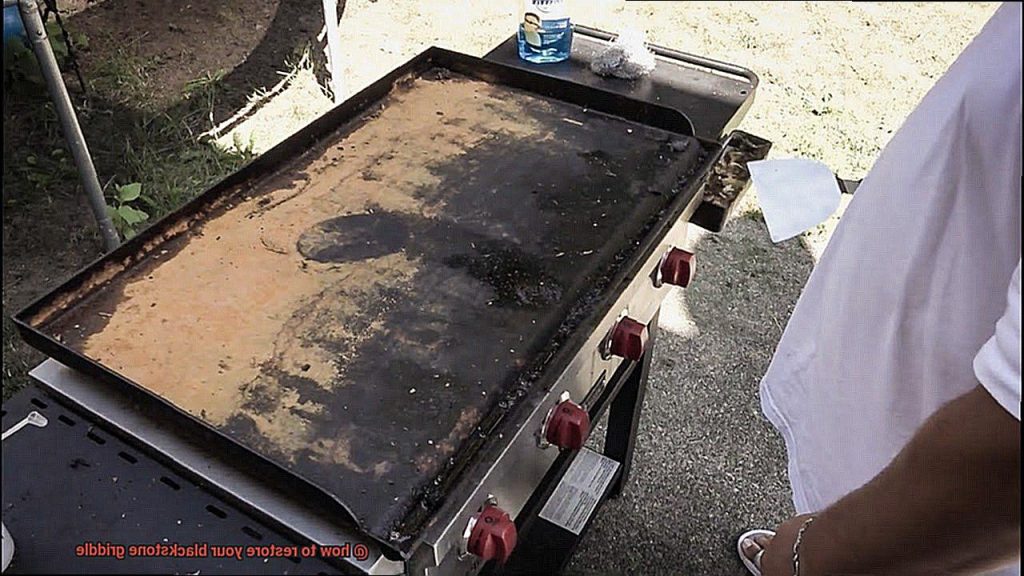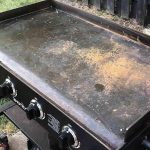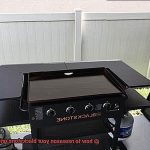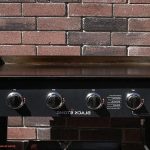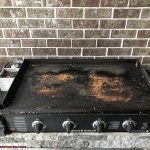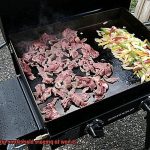Are you tired of your Blackstone griddle looking like it’s been through a war? Is the rust and grime making it harder to cook up your favorite meals? Fear not, because restoring your Blackstone griddle is easier than you might think.
Whether you’re a seasoned grill master or just starting out, a clean and well-maintained griddle is essential for any outdoor kitchen. But don’t worry, restoring your Blackstone griddle doesn’t have to be an overwhelming task. With a little bit of elbow grease and some patience, you can quickly bring your griddle back to life.
In this blog post, we’ll share some practical tips and tricks that will help you restore your Blackstone griddle to its former glory. From deep cleaning to removing rust and seasoning the surface, we’ve got everything covered. Say goodbye to uneven heat distribution and sticky cooking surfaces – with our expert guidance, you’ll have a perfectly seasoned griddle in no time.
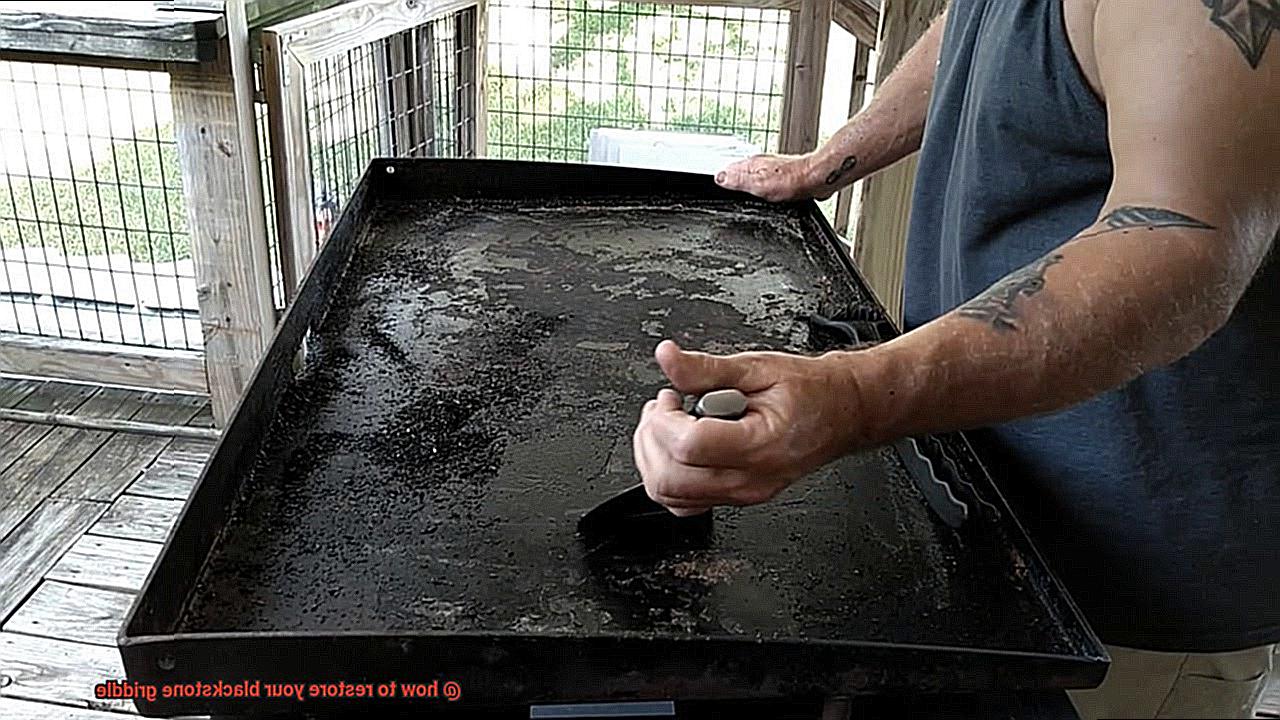
So let’s get started. Follow along with our step-by-step guide and discover the proven techniques for restoring your Blackstone griddle. You’ll be amazed at how easy it is to make it look like new again.
Contents
What is a Blackstone Griddle?
This versatile flat-top cooking surface is a crowd-pleaser, perfect for outdoor cooking at your backyard barbecue or on a camping trip.
Crafted from high-quality cold-rolled steel, the Blackstone Griddle is built to last. Its thick metal cooking surface heats up quickly and evenly, making it perfect for searing meat, vegetables, and even pancakes. The large size of the griddle also allows you to cook multiple types of food at once, making it easy to feed a crowd.
One unique feature of the Blackstone Griddle is its built-in grease management system. This system helps keep the griddle clean while cooking, making it easier to maintain and extend its lifespan.
To keep your Blackstone Griddle in top condition, regular maintenance is key. Start by cleaning it thoroughly with a scraper or spatula to remove debris, followed by a cleaning solution designed for griddles. You can even make your own solution using vinegar and water.
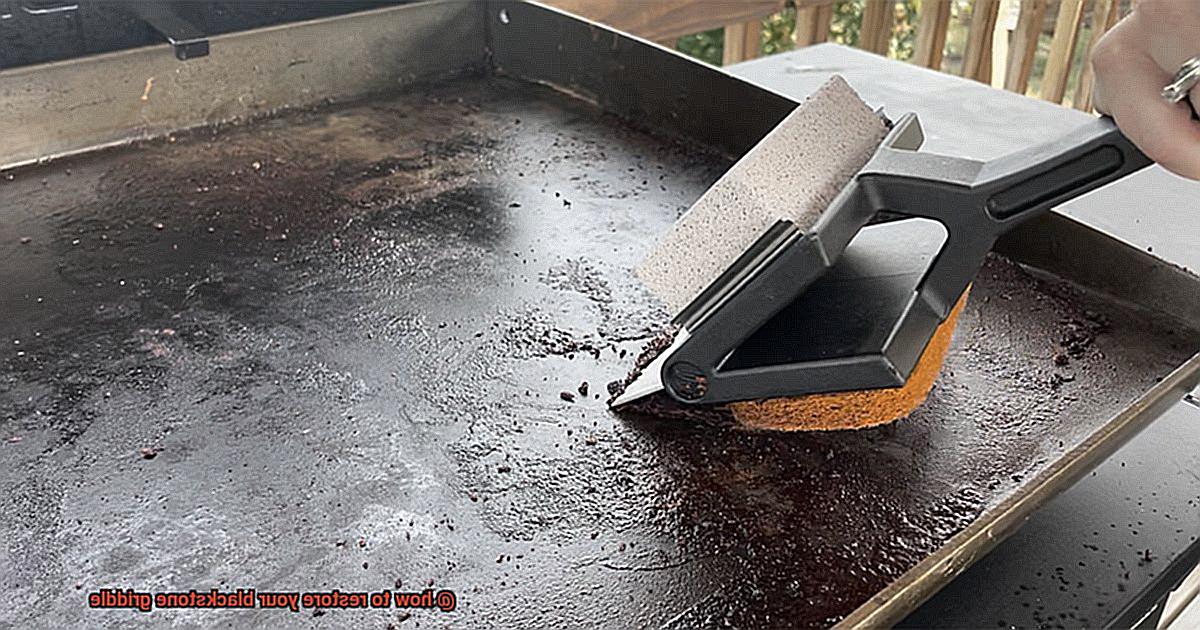
Next, season your griddle with a thin layer of cooking oil. Heating it for 20-30 minutes creates a non-stick surface that also protects against rust and corrosion.
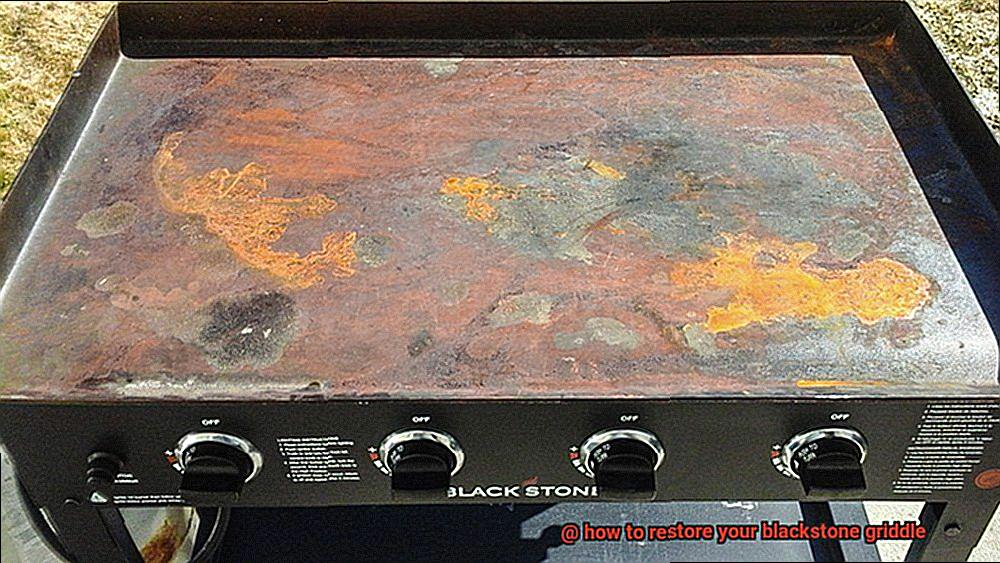
Cleaning Your Blackstone Griddle
Over time, grease and food debris can accumulate on the surface of the griddle, making it difficult to cook on and unsanitary. But fear not. With these simple steps, you’ll be able to restore your griddle to its former glory in no time.
- Step 1: Scrape off any remaining food debris from the surface of the griddle. Using a scraper or spatula, make sure to scrape in a single direction. Avoid using abrasive materials that could scratch the surface of the griddle.
- Step 2: Apply a cleaning solution to the surface of the griddle. You can either use a commercial cleaner designed specifically for griddles or make your own solution using water and vinegar. Apply the solution evenly over the surface of the griddle and let it sit for a few minutes.
- Step 3: Gently scrub the surface of the griddle with a non-abrasive scrub pad. Avoid using anything too abrasive that could damage the surface. You may need to repeat this process several times until all of the grease and debris have been removed.
- Step 4: Rinse off the griddle with water and dry it thoroughly with a clean cloth. Make sure there is no excess water left on the surface of the griddle as this can lead to rust and other damage over time.
Removing Grease and Food Residue
Cooking on a Blackstone griddle is an exciting and delicious experience. However, after multiple uses, grease and food residue can build up and make it difficult to cook on the surface. Fear not, because there are easy ways to remove all the gunk and restore your griddle to its original glory.
Step One: Scrape It Off
The first step is to remove any large clumps of food using a scraper or spatula. Make sure to use a scraper that won’t scratch or damage the surface of the griddle. Scrape off as much as you can so that the cleaning process will be easier.
Step Two: Choose Your Cleaning Solution
To remove any remaining grease and residue, there are two options: commercial cleaning solutions or DIY solutions. You can choose from a variety of commercial products specifically designed for griddles. Alternatively, you can make your own cleaning solution using vinegar or baking soda mixed with water.
Step Three: Scrub It Down
Apply your chosen cleaning solution to the surface of the griddle and let it sit for a few minutes. Following that, use a non-abrasive scrubber or brush to scrub away any remaining grease or residue. Be sure to follow the instructions on the commercial cleaning solution bottle for best results.
Step Four: Rinse and Dry
Rinse the griddle thoroughly with water and dry it with a clean cloth. By drying it completely, you’ll prevent any water spots or streaks from forming on the surface of your griddle.
Congratulations. You have now successfully removed all grease and food residue from your Blackstone griddle. Not only does this keep your griddle looking great, but it also ensures that it functions properly for years to come.
Removing Rust from the Griddle
Rust can accumulate on your griddle over time, especially if it’s exposed to moisture or left outside without proper care. If left untreated, it can damage the metal surface, which could affect the quality of your food. But don’t let it get you down – with the right tools and materials, you can easily restore your griddle to its original condition.

To start, gather your materials – a wire brush or steel wool, a cleaning solution (such as vinegar or lemon juice), and possibly a scraper for stubborn spots. Before beginning, make sure to turn off the heat and let the griddle cool completely.
Using the wire brush or steel wool, gently scrub away any visible rust spots on the surface of the griddle. Be careful not to apply too much pressure as this may scratch or damage the surface.
Next, apply your chosen cleaning solution directly onto the rust spots and let it sit for at least 15 minutes. The acidity in vinegar and lemon juice helps break down the rust and make it easier to remove. After 15 minutes, use your scraper to gently remove any remaining rust spots.
Once all of the rust is removed, rinse the griddle with water and dry thoroughly with a clean towel. You may also want to apply a light coat of cooking oil to prevent future rust from developing.
Seasoning Your Blackstone Griddle
After prolonged use, even the most well-loved griddles can start to show signs of wear and tear. That’s where seasoning comes in.
Seasoning your Blackstone griddle is like giving it a spa day – it cleanses, revitalizes, and leaves it looking and feeling its best. By following these simple steps, you’ll be able to restore your griddle to its former glory and enjoy non-stick, rust-free cooking for years to come.
To begin with, heat up your griddle to around 350-400 degrees. This will help to open up the pores of the metal so that it can absorb the oil more effectively. Once it’s hot, it’s time to add some oil. We recommend using an oil with a high smoke point, such as vegetable or canola oil.
Next, grab a paper towel or cloth and spread the oil evenly across the surface of the griddle. Don’t skimp on the oil. Make sure to reach all corners and edges – every inch of that metal needs to be coated in oil. Let the oil sit on the surface for about 15-20 minutes so that it can fully absorb into the metal.
Once the oil has had time to soak in, use a scraper or spatula to remove any excess oil from the surface of the griddle. You don’t want too much oil sitting on top – just a thin layer is perfect.
Repeat this process a few times until you’ve built up a good seasoning layer on your griddle. This will help prevent rust and create a non-stick surface for cooking. Plus, it’ll give your griddle that beautiful black patina that seasoned chefs know and love.
It’s important to note that cleaning your griddle after seasoning is different from regular cleaning. Never use soap or water, as this can strip away the seasoning layer you’ve worked so hard to build up. Instead, use a scraper or spatula to remove any leftover food debris and wipe down with a cloth or paper towel. If you need to deep clean your griddle, a mixture of water and vinegar will do the trick.
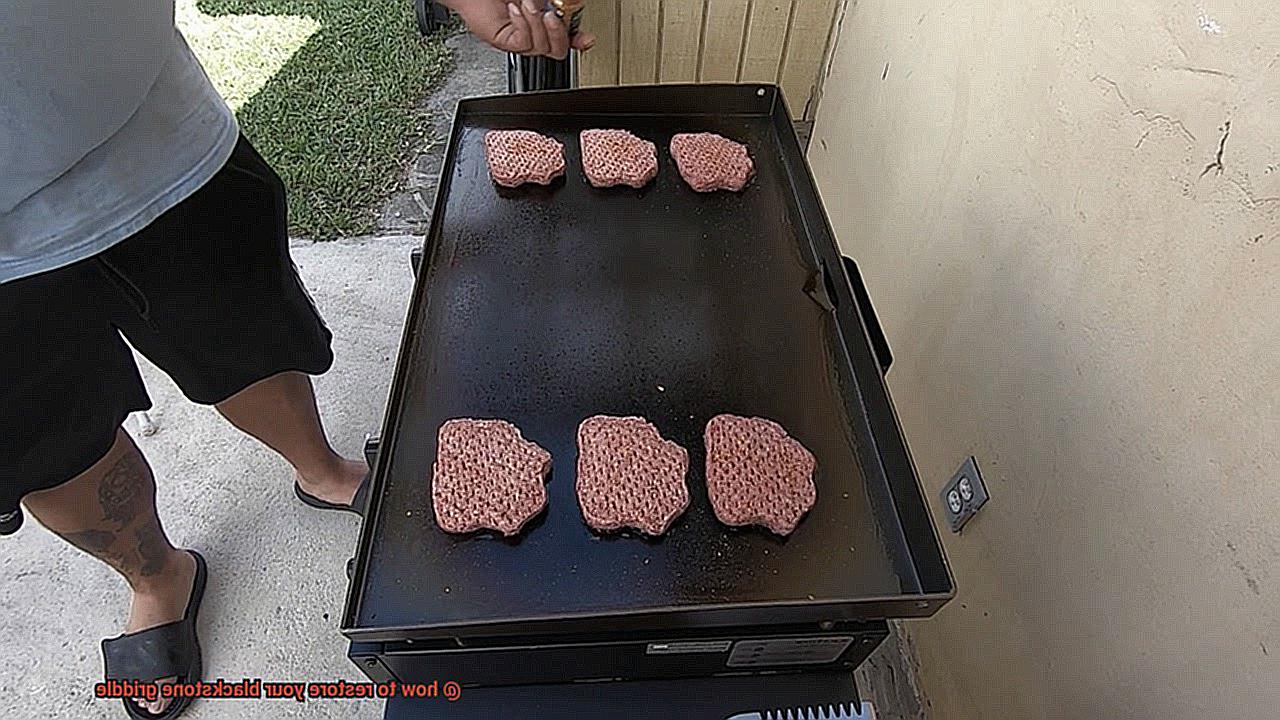
Applying Cooking Oil to the Griddle Surface
Look no further. One crucial step in maintaining your griddle is applying cooking oil to the surface. This simple process helps to season the griddle, prevent rust, and protect it from scratches and other damages.
Before applying the oil, ensure that the griddle surface is entirely clean and dry. Start by turning on the griddle to high heat for 10-15 minutes to remove excess grease or residue. Then, using a scraper or spatula, remove any food particles or debris from the surface.
Now comes the fun part. Using a clean cloth or paper towel, apply a thin layer of cooking oil to the entire surface of the griddle. Whether you prefer vegetable oil, canola oil, or even bacon grease (yum.), be sure to spread the oil evenly across the surface and apply extra to any areas that appear dry.
After applying the oil, turn the heat back on and let it sit for 15-20 minutes. This allows the oil to penetrate into the metal’s pores and create a protective layer on top. Once complete, turn off the heat and let the griddle cool down entirely.
You’re almost there. Wipe off any excess oil with a paper towel or cloth. Your Blackstone griddle should now be beautifully seasoned and ready for your next cookout.
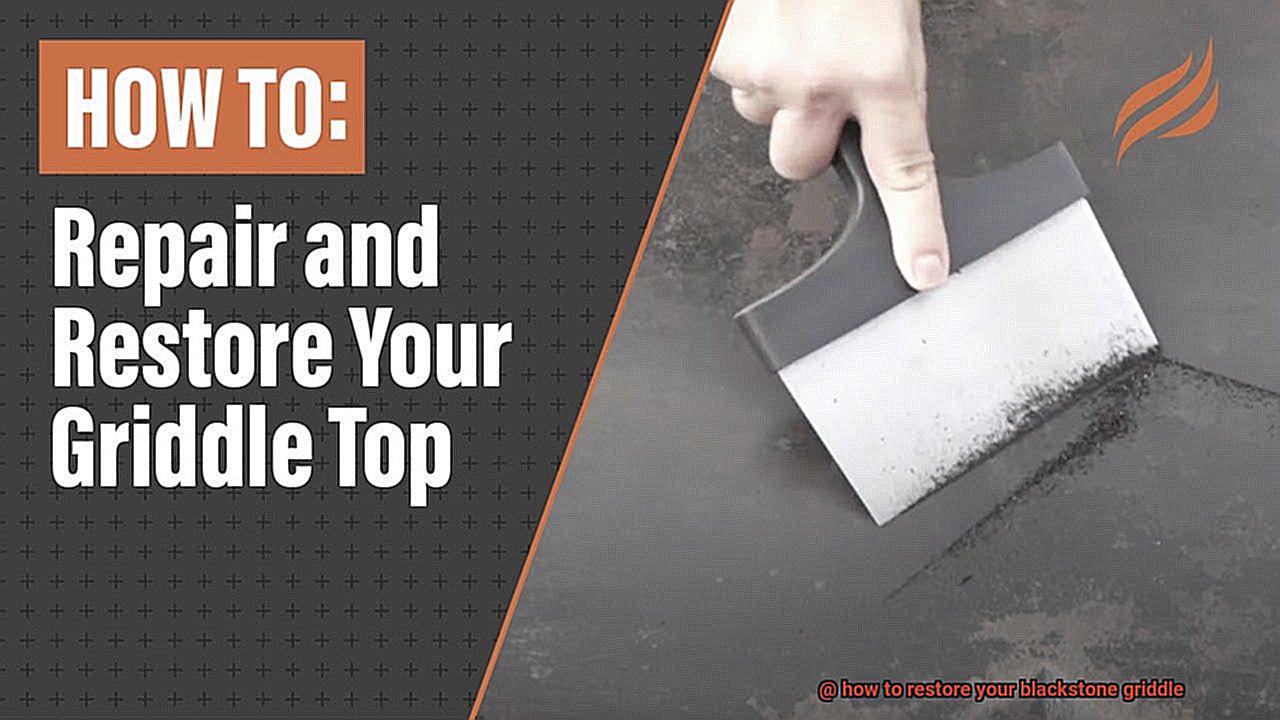
Remember always to keep your griddle clean and well-seasoned for optimal performance and longevity. Applying cooking oil is an essential step in maintaining your Blackstone griddle’s non-stick properties while also protecting it against rust and scratches.
Heating the Griddle for Seasoning
Then it’s time to heat up your Blackstone griddle for seasoning. As an expert on this topic, I’m here to guide you through the process step-by-step.
First, make sure your griddle is clean and free of any debris or rust. A clean slate is crucial for a successful seasoning process. Once it’s clean, crank up the heat and let it get hot, hot, hot. You want it to reach a scorching temperature of around 500-550 degrees Fahrenheit. This high heat will remove any impurities and prepare the surface for seasoning.
Next, turn off the heat and let it cool down slightly. But don’t let it cool down completely – this can cause the surface to contract and make seasoning more difficult. You want it to be warm enough to absorb the oil evenly.
Now it’s time to apply a thin layer of oil to the surface. But not just any oil will do – use an oil with a high smoke point like vegetable, canola, or flaxseed oil. Spread the oil carefully across the surface using a cloth or paper towel. Use a spatula or scraper to help spread the oil around and ensure that every inch of the surface is covered. This is where you’ll start to see that beautiful sheen appear on your griddle.
Once you’ve applied the oil, turn on the heat again and let it cook for around 15-20 minutes. The heat will cause the oil to polymerize and create a non-stick surface on the griddle. This is what makes your Blackstone griddle such a joy to cook on. But be sure to keep an eye on it – you don’t want the oil to burn.
After 15-20 minutes of cooking, turn off the heat again and let it cool down before wiping off any excess oil with a clean cloth. Your Blackstone griddle should now be fully restored and ready for use. But don’t stop there – repeat this process a few more times to build up a stronger seasoning layer. The more you use your griddle, the better it will get.
Wiping Off Excess Oil After Cooling Down
We know that maintaining your blackstone griddle is important to ensure it continues to produce excellent results every time you use it. One essential step in this maintenance routine is wiping off excess oil after cooling down.
First things first, allow the griddle to cool down completely before attempting to wipe away any remaining oil or food debris from the surface. Once it’s cooled, use a paper towel or clean cloth to gently wipe away any excess oil. This simple task helps prevent an uneven coating of oil on the surface, which can lead to sticking and uneven cooking.
It’s important to note that wiping down the griddle while it’s still hot can cause the oil to spread around and create an uneven coating, leading to issues with sticking and uneven cooking. By waiting for the griddle to cool down, you’re ensuring that the oil stays in place and doesn’t spread around.
But wiping off excess oil isn’t just about maintaining your griddle’s surface. It also helps prevent drips and spills on surrounding surfaces and reduces the risk of flare-ups during cooking. So, take a few extra seconds to wipe away any excess oil, and you’ll be preventing a whole host of potential problems.
After wiping off the excess oil, consider applying a light layer of oil to the surface of the griddle using a clean cloth or paper towel. This will help prevent rust and keep your griddle in top condition for years to come.
thPE2IgnSiI” >
Conclusion
In conclusion, restoring your Blackstone griddle is a simple yet crucial process that involves deep cleaning, rust removal, and seasoning. A well-maintained griddle not only ensures a delicious outdoor cooking experience but also prolongs the lifespan of your appliance.
To revive your Blackstone griddle, start by scraping off any debris from the surface with a scraper or spatula. Follow up with a specialized griddle cleaning solution to eliminate any stubborn grease or food residue. Once you’ve thoroughly cleaned the surface, it’s time to season it with a thin layer of cooking oil to create a non-stick barrier that protects against rust and corrosion.
Over time, grease and food debris can accumulate on the surface of the griddle, making it unsanitary and difficult to cook on. To avoid this buildup, scrape off any remaining food debris before applying an even layer of cleaning solution over the surface. Use a gentle scrub pad to remove any stubborn stains before rinsing off the griddle with water and drying it thoroughly with a clean cloth.
Rust spots are common on outdoor appliances like the Blackstone griddle due to exposure to moisture and lack of proper care. To tackle these spots like a pro, gently scrub away any visible rust using wire brush or steel wool before applying vinegar or lemon juice directly onto the affected areas.
Lastly, wiping off excess oil after cooling down is crucial in preventing an uneven coating that can lead to sticking and uneven cooking.

